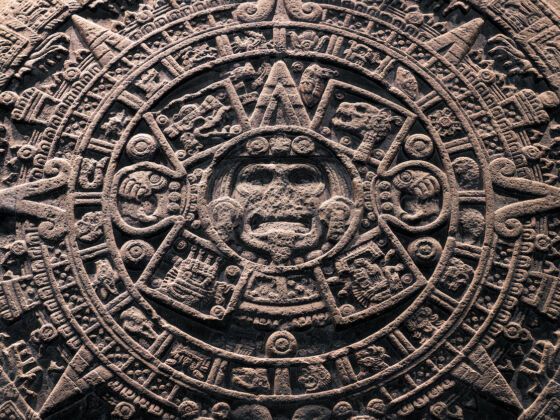Those without knowledge of their past may not feel genuine pride. If you’re Mexican, I hereby present you some little-known information about our history and Tenochtitlan (capital of the Aztecs–the name given by the Spanish). The city, which now lies under the foundations of Mexico City, was the biggest civilization of its time and one of the most majestic mankind has built.

17 Facts About Tenochtitlan That Will Make You Even Prouder to Be a Mexican
1. In 1519, at the peak of its development, it’s estimated that between 80- and 300-thousand inhabitants lived within the “city limits” of Tenochtitlan. Historian Jacques Soustelle notes, however, that counting the population of the surrounding lake areas, the population was more 700,000. So to give an idea, London at that time had 100,00 thousand inhabitants.
2. It was the first city in the world which guaranteed free education. Although it’s true that a division existed between education for the nobility and common people, it’s a marvel that the educational system did not leave anyone without a trade or profession. ¡300 years before the USA!
3. Tenochtitlan was totally white. Buildings, roads, houses, canals and temples were that color, since the building materials were composed of lime. For this reason, upon seeing it from afar, the Spaniards had the false impression of a city of pure silver.
4. In the wake of the greatness and might of the Aztec nation, one might think that their civilization was developed for centuries, as in ancient Rome. However, it may surprise you to know that it only lasted 200 years.
5. During the final 70 years of Tenochtitlan, rulers managed to dominate Mesoamerica–the equivalent of one-third of Europe.
6. The “pochtecas”, or traders, were not allowed to hold public office because it was well known that their efforts would be for the personal benefit.
7. Tenochtitlan had the fastest postal service in the word, with runners each relieving each other every eight kilometers. Moctecuhzoma I, for example, received fresh fish from the coast of Veracruz, from one day to the other.
8. In Tenochtitlan public office was achieved by meritocracy–the popular acclaim for works for one’s benefit to society. As an example, soldiers could rise to the rank of Eagle and Jaguar Warrior only if they had fought in a number of campaigns, or if they had captured a specific number of enemies or carried out certain projects for the benefit of the community.
9. They developed a system of artificial islands called “chinampas”, designed to produce double super abundant crops. In addition, all organic wastes. Even today there are chinampas in Xochimilco.
10. The squares of Tenochtitlan had free and public baths. And as exampled by the extreme cleaning of the tenochca society the state promoted social hygiene. Services of the public baths included small houses for urinating and defecating, and there were staff in charge of cleaning. Waste generated was used as fertilizer in the chinampas.
11. Tenochtitlan was the most well-lit city of the 16th century, with torches, bonfires, and barbecues located at the top of the temples, which all reflected in the Lake, creating a truly magical vision.
12. Tenochtitlan developed medical specialties unknown to many cities in the world at the time including surgery, herbalism, chiropractic, and psychology. There was, for example, physicians dedicated to the interpretation of dreams and memories, because they believed that all evil had a spiritual cause.
13. The city of Tenochtitlan was built on a swampy Lake. How? The architects and builders designed a foundation via a series of submerged pens.
14. All citizens had to pay two types of taxes: one in spices and another with labor called “tequio”, as it was an obligation to contribute to the development of the city.
15. The continent’s first zoo was established in Tenochtitlan, ordained by Moctezuma I and which was home to all animal species known in the region at the time.
16. The diet of the mexica, and in general of all native peoples, was based on insects, seeds, roots, plants and meat only occasion, but not as a daily habit.
17. There existed in Tenochtitlan only two forms of transport. One was walking through the streets and squares and another in canoe through the canals of the city, can you imagine?